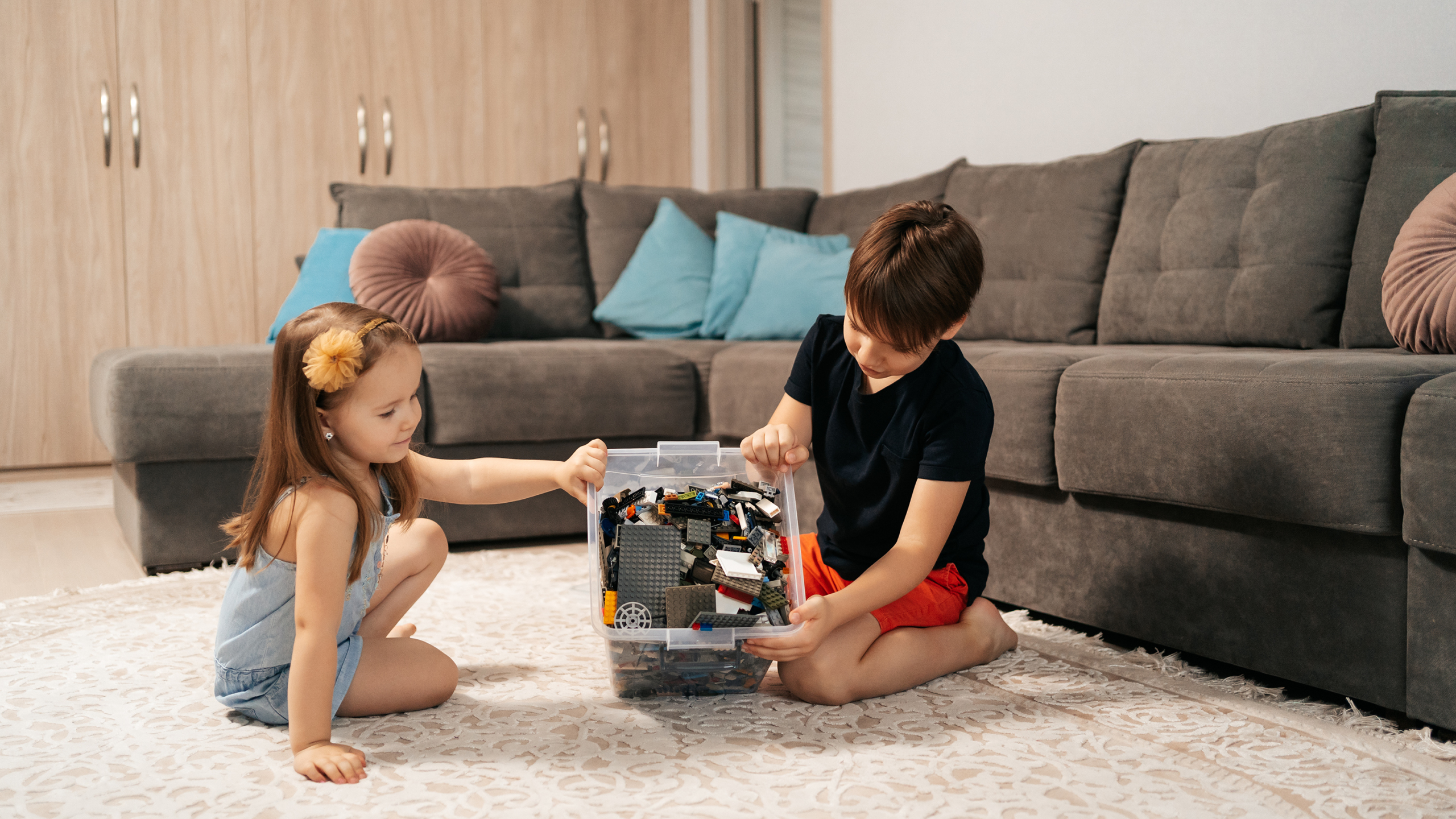
In this article, we will discuss how children’s desire to play can be developed. We think that there are four main criteria to increase children’s desire to play. These include autonomy, interaction, surprise, and feeling empowered. The desire to play creates a cycle in children. They feel special and get lost in the activities they do. In this way, they feel competent and want to try again what they have done.
Everyone says that playing games are beneficial for children’s sense of learning and development. But what do we do to develop children’s desire to play? What can help us and what can prevent us while developing this desire of children?
If we can weigh the advantages and disadvantages correctly, it will be easier for us to create conditions where children can benefit from playing. There may be times when parents see playing with their children as an opportunity to develop their creativity. It’s best to know that everything parents try to do may not always work. This is probably because something is missing in the environment or the child is not physically or mentally fit.
First of all, a child who plays games needs to feel autonomous. While playing games, choices such as what to do, what to say, which toys to play with should belong to the child. Such matters should not be sabotaged by parents.
Secondly, when children play, they immerse themselves in what they are doing. They get lost in the things they do and the materials they use. While children are playing games, they do not know how they reach the result while they are playing or doing something. Who built this tower, who came up with the idea for this game? Who came up with this idea? Was it me or was it my friend? This is because they get lost in the game.
Surprise is the 3rd essential feature of developing children’s desire to play. . In the interactions we just described, children do not have a specific plan for what they will do. It can cause many surprises when children play since they take unthinkable actions. It is normal for children to behave unexpectedly and unintentionally while playing.
Children who focus solely on exploration without a compass in their hands offer us the 4th feature of play: a sense of empowerment. . A growing sense of competence develops as children play. The reason for this is that it is actually a very difficult thing to surprise oneself. According to research, playing games gives children an unexpected boost in the things they feel they can do. Thus, playing motivates children to see how far they can go.
Duck Experiment in Adults

In one study, 22 adults were given five small plastic bags. Each bag contained six Lego pieces of different sizes. Four yellow legos had eyes on either side, and two were red. The participants were asked to make ducks using the blocks, but the first time they did it, they had to be creative and bring out their childish side. The second time, they were asked to do it in ways that were not fun. Immediately after each round, participants were asked how they approached the task and what they experienced in different parts of the process.
The change of mindset proved to make a big difference. When advised to be childish and have fun, the participants consciously said they wanted to be autonomous, not thinking about the experiment, but instead doing whatever they wanted. Some even try to make no ducks at all because they decided to build cars, buildings, or whatever they wanted. A sense of autonomy allows participants’ ideas to flow freely. They commented, “It’s like Lego pieces have taken over our minds.”
They surprised themselves with the odd-looking ducks that appeared. Being surprised by their own actions made them feel empowered. “I did this!” they said. They reported they want to make more new and surprising ducks. Because they felt autonomous, they were able to say, “Let’s do it again”. They were motivated to see what else they could do.
In contrast, when asked not to be fun, participants said they tried to enter a mechanical mode according to the instructions. Typically, they made five identical ducks in accordance with the prototype shown.
Few participants described the non-game situation as fun and motivating. Mechanical phenomena do not surprise people. Trying to be quick while making ducks can be a little bit fun, but this can quickly turn into boredom when faced with a repetitive task.
Willingness to play increases motivation to learn
This experiment showed how acting develops and increases intrinsic motivation. The desire to play gives children an urge to do something, not because of external orders, but because of personal interest.
This encouragement of the instinctive desire to play shows us that learning can be enhanced through play. Learning is a job that requires motivation. This is because while learning, we need to do the same things over and over and not get tired of what we are doing. The desire to play encourages children to do something constantly and repetitively because children can generate personal rewards and develop their sense of creativity and learning.
How to develop the benefits of playing?
According to the above information, if we want to support playing and learning in children, we must first realize these 4 concepts. The concepts were autonomy, interaction, surprise, and feeling empowered. So, how can parents and educators who are responsible for the child’s development encourage children’s willingness to play and learn?
Let’s start with autonomy. A teacher in a kindergarten or other classroom should create opportunities for children to be autonomous. Is the environment unnecessarily restrictive, prohibitive, or intimidating? What rules are absolutely necessary? Which can be changed to be more obvious? Kids can do anything that day as long as their actions don’t harm anyone or equipment. After all, many teachers say no to everything, afraid of interrupting or hindering children’s play.
Supporting internalized interaction

How can children be encouraged to internalize materials? The answer is simple: by presenting interesting materials and asking them to interact (without telling them exactly what to do, of course). For example, a parent might bring an old wallpaper and place paints nearby. He can tell the kids he can’t find the brushes and ask them to help him find something else to paint. Can they use a stick to paint? What if we just said they had to do it with the sharp end of the stick? What would it look like if we rolled the stick on the paper? Is it possible to paint with leaves? What about stones? Maybe they want to use their feet. Kids can play for hours when they’re sure something won’t interrupt their play.
Creating surprise and empowerment
Adults should consider what creates a sense of surprise. One day my daughter and I were walking through a forest and I asked her, “What if everything we see can also see us? For example, like the tree over there.” My daughter was a little taken aback. “A tree?” she asked. “Yup!” I said. “But it has no eyes!” she replied. “Are you sure? I think it is staring at us, too. Did you know that when the snails approach, cabbages cover their leaves so snails cannot get in?”
This type of small talk can create a sense of surprise in children. As they become surprised at something, they will want to do it more and more, so they will have the opportunity to practice many times. What you need to do as a parent is to let children play by themselves and create a sense of competence in them.
Parents and trainers who want to join the Pre-Education family or want to get detailed information about our services can reach us by filling out the application forms on our website.
